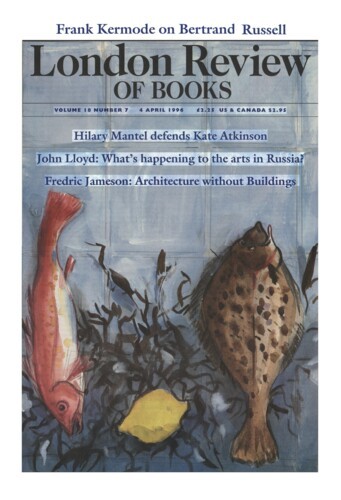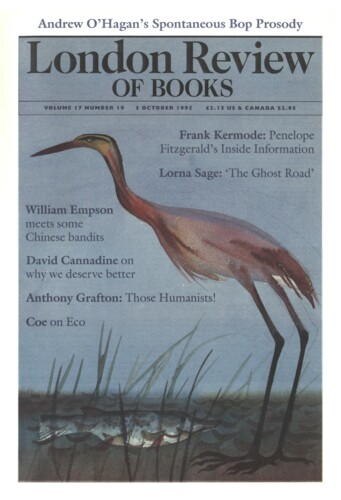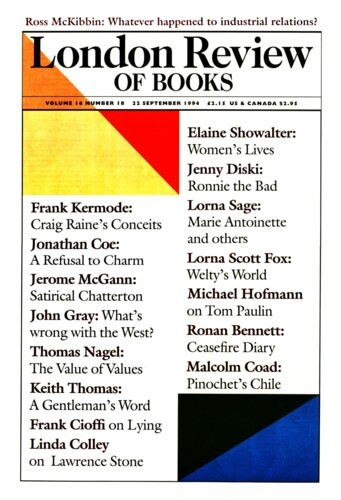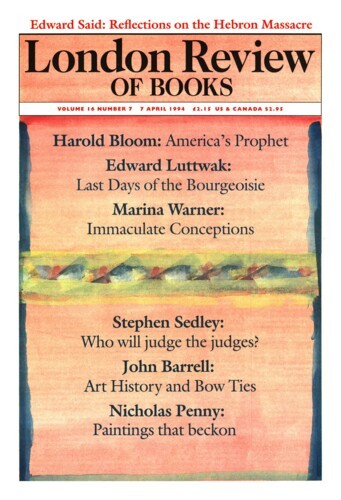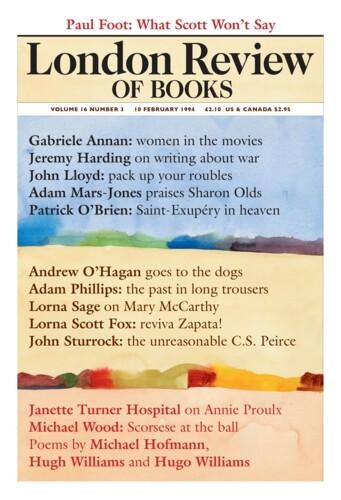Winter Facts
Lorna Sage, 4 April 1996
Christine Brooke-Rose’s story of how this new book came to be is that she set out to write about her life, and instead produced a kind of antibiography. It’s described in the jacket’s blurb by Carcanet as ‘an autobiographical novel with a difference’ which ‘uses life material to compose a third-person fiction’. Inside the covers we’re told with confessional baldness that ‘the old lady’s publisher has asked for an autobiography. But the resistance is huge. The absorbing present creates interference, as well as the old lady’s lifelong prejudice against biographical criticism, called laundry-lists by Pound. Only the text matters, if the text survives at all.’ But then, isn’t life always text for a Post-Structuralist? And then again, treating the facts as fiction doesn’t seem exactly a major departure if your fiction is of the pareddown, see-through, new-novelish kind. Whichever way you look at it, Christine Brooke-Rose is on home ground in Remake: making it over is second nature to her.
